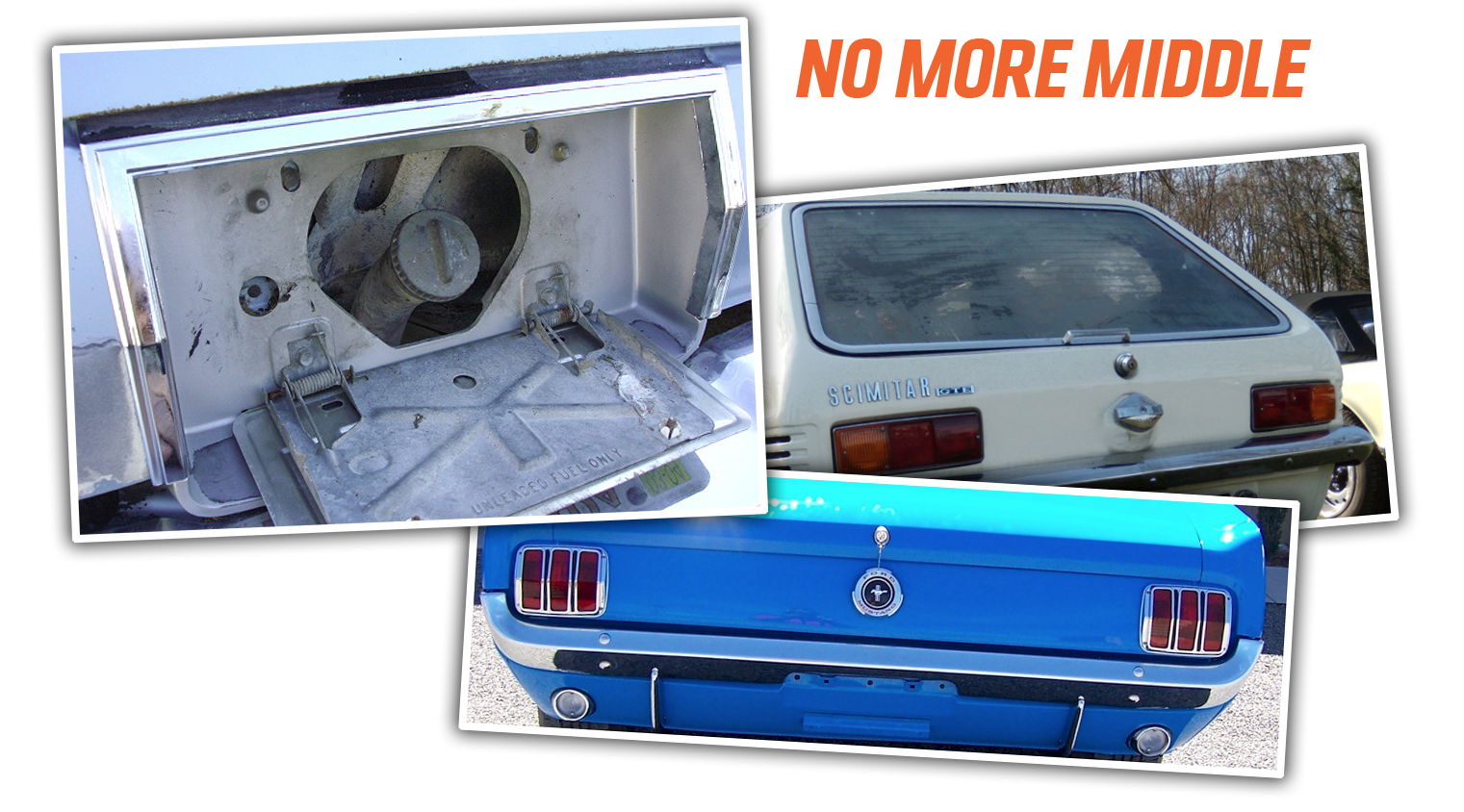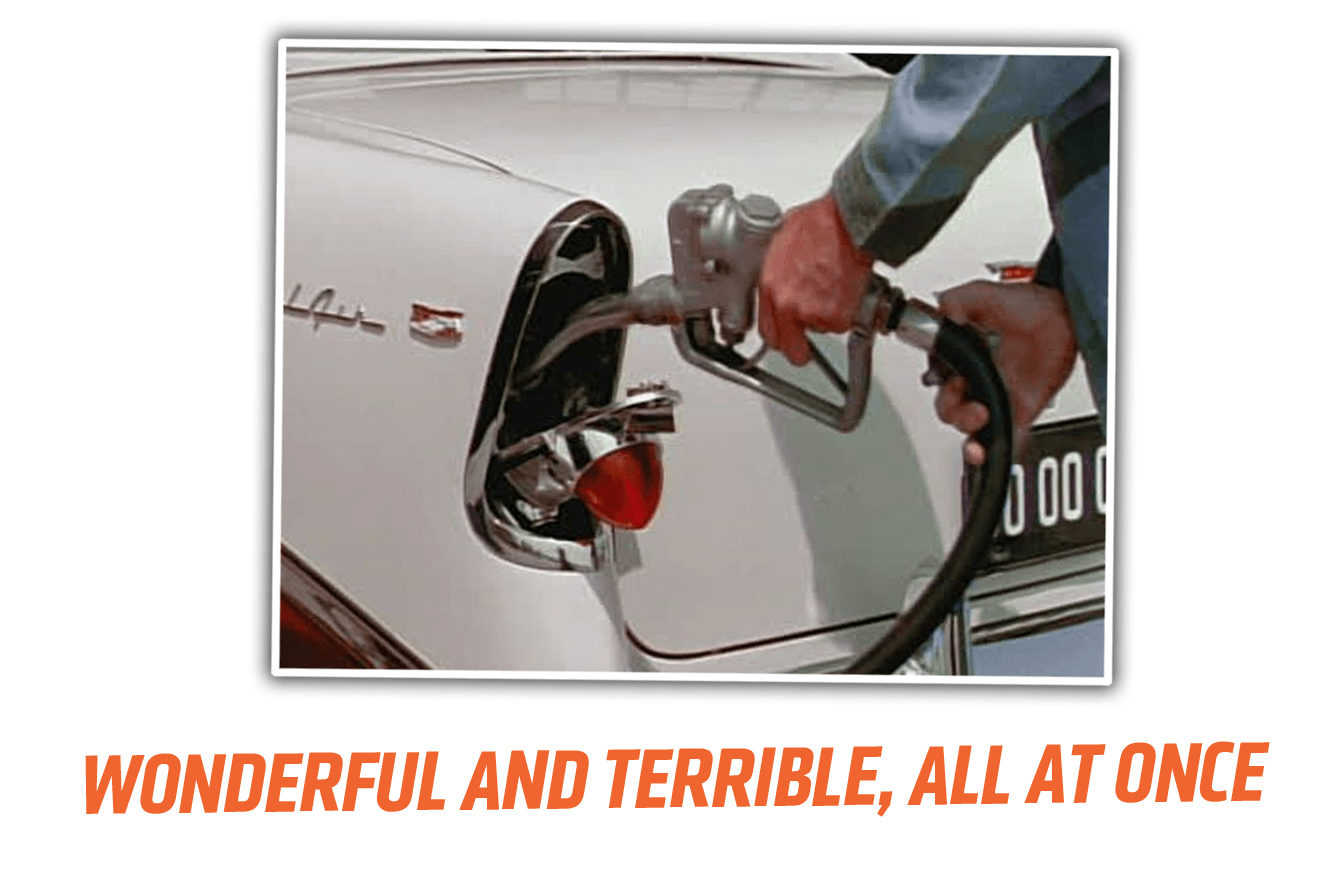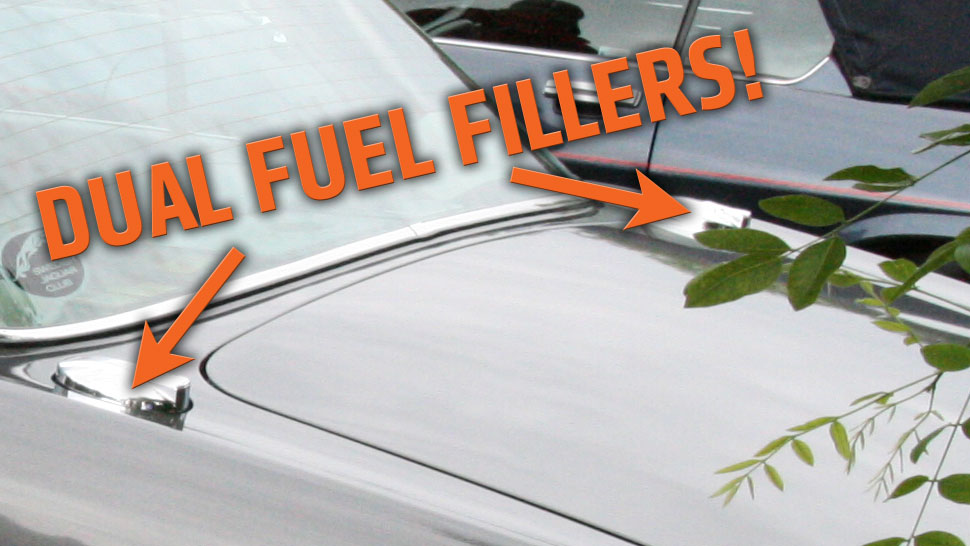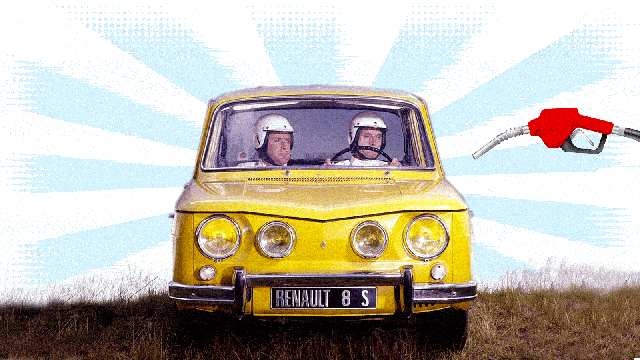Quick — which side of your car is your fuel filler on? No running outside to look, that’s cheating, and you might get hurt pulling your pants on. Chances are most of you at the very least had to take a moment to think about this. I suspect you won’t think long about what side your steering wheel is on. That’s because, unlike other crucial parts your car, there is no standardised place for what side you pump fuel into your car. Why not?
You might think that there would at least be some sort of consensus in the industry about which side of the car was preferable to place the fuel filler, and that there would be some sort of unspoken agreement that that’s where it should go, which would make trips to the gas station far more orderly, since there’d be no question as to what side of the pump you should pull up to.
Of course, if you thought that, you’d be wrong.
It’s not like there aren’t any rules governing where you get to shove a hose full of incredibly flammable liquid into your car — of course, there are many. It’s because of these rules that the most convenient possible place — in the center, so you can comfortably fill up from any side — is now illegal.

I have a car with a fuel filler at the center of the rear, and it’s fantastic. I’ve had cars in the past that have hidden the fuel filler in the center, behind the flip-down licence plate, and I loved those as well.
Sadly, putting a fuel filler in the center rear of the car is a great way to turn a minor rear-end collision into a festively horrific bonfire, since a simple impact to the rear can snap off the filler neck to the tank, sending gasoline splashing out all over the place, which generally makes any minor accident far worse. So that’s been illegal for quite some time.
In fact, any fuel filler that is placed near any extreme outer edge of a car, like the famous Bel Air tail-light fuel filler, is illegal.

Current regulations demand the filler be at the widest part of a car, inboard of any crumple zones, and safe from dripping onto any hot exhaust bits or electrical wiring. This generally means the filler needs to be on one or the other sides of the car, and relatively near the passenger compartment.
So, with that in mind, we know where it can’t go, so how do companies decide where it should?
Passenger’s side — and by that I mean the right side here, in the US — proponents generally include most continental European carmakers, and many American ones, while the biggest driver’s side — the left side, in the US — advocates seem to be from Japan. There’s plenty of exceptions, even within the same company, but in very rough terms, these divisions seem accurate. And of course, some countries like the UK and Japan have the driver on the right, but for my examples let’s go with American rules.
I emailed Volkswagen about why they seem to prefer passenger-side (right) fuel fillers, and here’s what I was told:
Volkswagen passenger cars always on the right (passenger) side (to keep the filling person away from the street/lane traffic in left hand drive cars, which is the majority of our sales).
Volkswagen Commercial vehicles on the left (driver’s) side, due to the standard right hand side sliding door of the T-series (there is no space left before the door for a tank lid, and no space thereafter as the pump might interfere with the door when suddenly opened by a passenger).
Our own David Tracy, who spoke with an Fiat Chrysler engineer, got a very similar explanation about the various reasons carmakers choose a side, including weighing convenience against the dangers of roadside jerry-can car-filling.
A Toyota engineer also relayed a similar justification for fuel filler-side decisions:
Depends on the OEM and may be affected by crash testing versus p/f packaging. In our case it is based on company policy for customer convenience.
In other words, we don’t want the customer to have to walk around the truck for left hand drive vehicles. Of course it is on the right side for right handle vehicles.
So, the basic explanation for why the fuel filler should be placed on the passenger’s side has to do with safety when, say, filling a car on the side of the road from a gas can. If you’re filling on the passenger’s side, you have a car between you and traffic. If you’re on the driver’s side, your arse is right next to all the speeding cars.
Of course, in countries with right-hand-drive cars that drive on the left side of the road, the reverse is true, which is one reason why many Japanese cars tend to have their fuel fillers on the left side of the car.
There’s certainly other more technical reasons for why a given side may be selected: for cars that use a mechanical, cable-operated internal release for the fuel filler, it’s much easier to have the release be on the same side as the fuel filler flap, so there’s a good reason to have it on the driver’s side.
And there’s so many other technical reasons that vary on any given model of car. As Steve Yeager of Nissan told this insurance company blog a while back:
“The placement of the fuel door is mainly a factor of fuel tank design, location and underbody packaging. With all of the structure and components located underneath the vehicle, (engineers) would quickly encounter restrictions in trying to route the filler tube to the same side on every vehicle.”
So the truth is, nobody really has any idea. Once the cheapest, most convenient solution, the middle, was made illegal, everything became a nightmare of relativism and equally rational justifications. Both sides have their advantages and disadvantages, and we’re left, wandering, alone, confused.
That’s not to say there hasn’t been occasional attempts to truly solve the problem. Jaguar, for example, pioneered the idea of the twin-filler fuel tank, with a fuel filler on each side. Imagine, the lazy joy of Jaguar owners who could fill up either way!

Sadly, they haven’t done this for years, and most carmakers just don’t think this sort of solution is worth the extra cost.
There’s even an argument that suggests that the distribution of fuel filler sides is in a state of equilibrium, and that if one side or the other were standardised, then that would mean that gas station lines would be longer, since everyone would have to line up for the same pumps in the same direction. I’m not sure I buy this, since cars would just face the opposite way on the other side of the pumps, and that would work as well.
The standardization could also make the whole process quicker and easier, without people confusedly backing up and re-backing up to get to their proper side. I’m not sold on the idea that the even distribution of sides actually makes fuel filling more efficient.
The struggle is real.
After researching this, and realising the vast lack of consensus, I’m not even sure I have a valid opinion anymore. I mean, I feel like driver’s side fuel doors are easier to align with the pump, but I’ve filled cars on the side of the road, and I absolutely appreciate having a car between me and somebody in an SUV about to get their high score on Candy Crush.
The truth, though, is that there are simultaneously many reasons why your car’s fuel filler is on the side it’s on and there’s also as many reasons why it could be on the other side. There is no one answer, and anyone who attempts to find one is on a path that only leads to madness.
Even so, it’s good to know that companies are at least committed to whichever side (literal side) they choose: either dedicated to making your life just a tiny bit easier every time you pull up to the pump, or keeping you from getting crushed to custard for those (admittedly pretty rare) times you may be filling from a can on the roadside.
I think I’m still preferential to the middle. I mean, occasional convenience is usually enough to make me forget the whole “horrific fire” thing.
